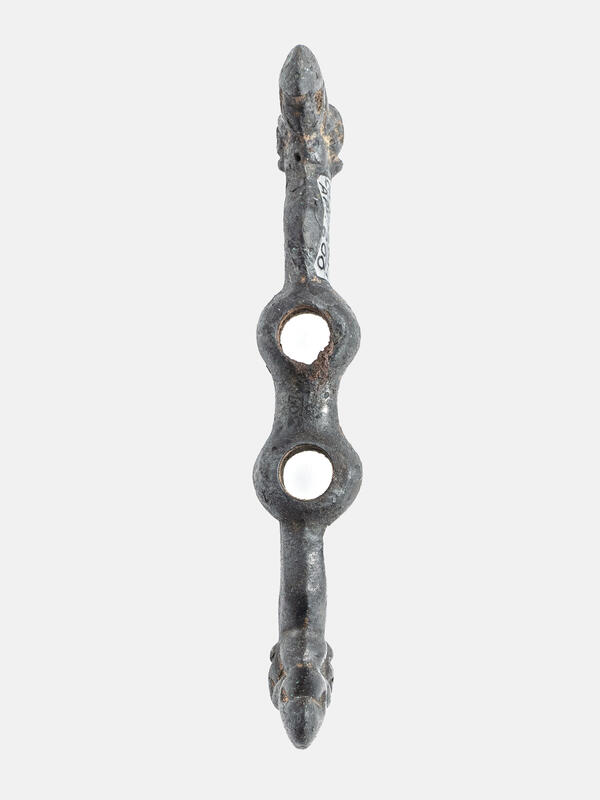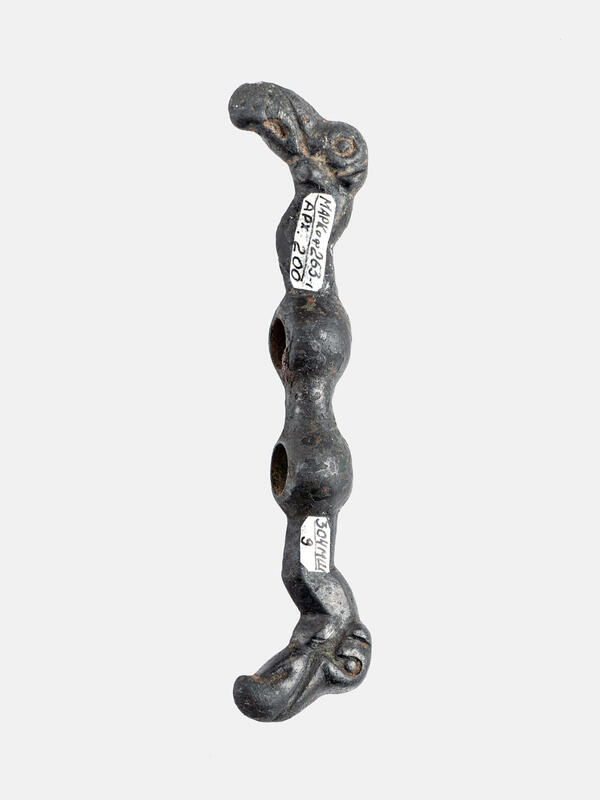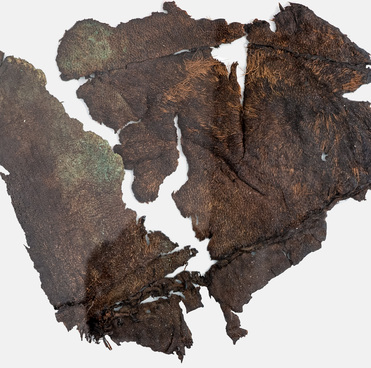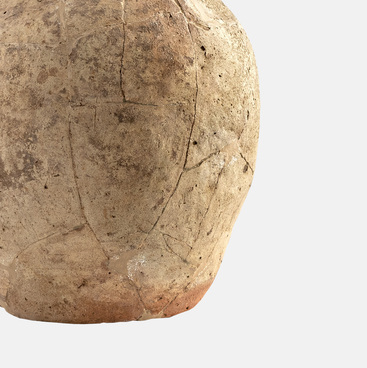The exhibition of the Chelyabinsk State Historical and Archaeological Museum-Reserve “Arkaim” presents a cheek-piece with griffin heads. The cheek-piece was found during the excavations of burial mound 3 of the Marovy Shlyakh burial ground. The burial ground is located 8.5 kilometers south-southeast of the village of Cherkasy, Kizilsky district, Chelyabinsk region, in the interfluve of the Bolshaya Karaganka and Utyaganka rivers, in the upper reaches of the Korytin Dol gully. The burial ground was named after the road Cherkasy — Bredy, which in ancient times was called Marovy Shlyakh. The burial ground consists of five mounds with earth and stone fills. A survey marker was set on the largest mound 1. Mound 4 with a stone fill was excavated in the 1930s by peasants from the village of Cherkasy. Mounds 2, 3 and 5 were examined in 1992 by an expedition of the Chelyabinsk State University led by Alexander Tairov. Mound 3 had a diameter of 20.5 meters and a height of 1 meter. The excavated artifacts in the central part of mound 3 included a fragment of a stone altar on three zoomorphic legs, an iron S-shaped cheek-piece, a fragment of looped iron bridles, a bronze cylindrical shaft for cross-belts, a ceramic spindle whorl and a cheek-piece with griffin heads.
Cheek-pieces are a part of an ancient horse harness, a pair of rods or plates attached to the ends of the bits to fix them in the horse’s mouth. In the central part of the cheek-piece are two spherical sockets for fixing the bits, with round through holes made in the center. The ends of the cheek-piece are decorated in the animal style — with griffin heads. The heads are made in volumetric molding technique, stretching from the sockets on a long crank curved neck, hexagonal in cross-section. Both heads look in different directions and are turned in a perpendicular plane relative to the plane of holes. The heads are similar, differing in minor details (design of eyes, curvature of beak).
The heads of a camel-like griffin have large ears
and a long beak curved downward. There is a distinct cere half the length of
the beak, under the beak there is a roller — an imitation of a goiter. The
lines on the sides of the beak, forming the cere, move to the head and form the
eyes of the griffin in the shape of unclosed circles, in the center of which
the pupils are shown by a point protrusion. Behind the eyes are distinct
rollers — ears of the animal.




